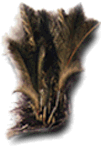|

|
|
|
We
get water from underground aquifers, deep within the earth.
Surface
wetlands gather water from rains and floods, slowly releasing it into the
ground where it percolates through
soil and rock.Pools of water form Aquifers ,underground streams and wells.
|
|
Save our Wetland
|
|
The communal
well of water from an aquifer is the lifeblood of our communities,
and so too are the rivers,
streams, lakes and ponds that form much of the wetlands.
It is a long purification
process, but a necessary one. Because we rely on water
from these reservoirs for our homes, our farms, and our factories.
And, although it is not
commonly known, the peat swamp forests also play an
important part in the water table. They provide us with a constant source
of groundwater for agricultural
irrigation, even during the dry season. So,
if we destroy our wetlands, we destroy our most basic necessity - water.
|
|






